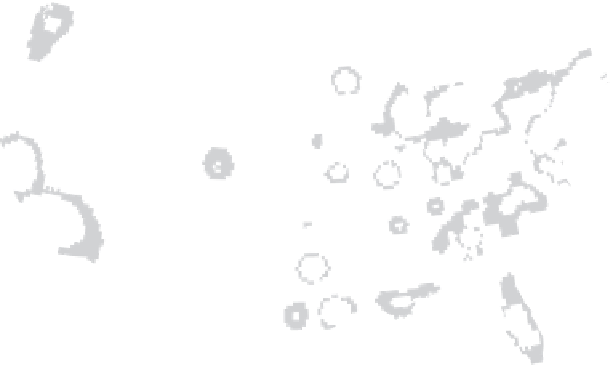Geography Reference
In-Depth Information
5.2. The dynamics of regional settlement between 1930 and 2005
1930
1950
1970
1930
1950
1970
1900
1900
1990
2005
Change in density
inh./km
2
0
50
0 km
-6.4
-
0.0
0.0 -
10.0
Pop. Mean Center
Standard Deviation Ellipse 1930
74% U.S. population
Standard Deviation Ellipse 1970
71% U.S. population
SMSA (1970)
4,900,000
2,450,000
490,000
10.0
-
20.0
20.0
-
30.0
30.0
-
80.0
80.0
-
248.7
Method: Quartic Kernel density smoothing in
a flexible bandwidth of the 30 nearest counties
Source: US Census Bureau
Designed and made by JM Zaninetti, University of Orleans, CEDETE Institute
Figure 5.7.
Population growth between 1930 and 1970
As the 19th century was marked by the migration of America's center of gravity
towards the west, the 20th century was marked by a shift in the population's
barycenter towards the Southwest (see Figure 5.7). Located 73 km south of
Indianapolis in 1900, the country's center of gravity moved 108 km westward
between 1900 and 1930, then another 200 km west between 1930 and 1970, leaving
Indiana in 1940 to enter Illinois. Its trajectory began to pivot southward. The central
period of the 20th century also marked a certain decentralization of population,
resulting in an enlargement of the standard ellipse of deviation of populations. This
is an area bordered by the average distance at which a population lives from the
barycenter in any given cardinal direction [ZAN 05]. This figure pinpoints the
“center” of the US, taking shape around an east-west axis from Boston to Denver







































































































































